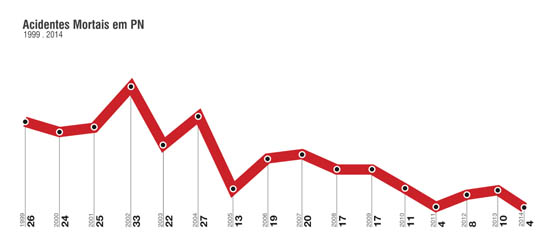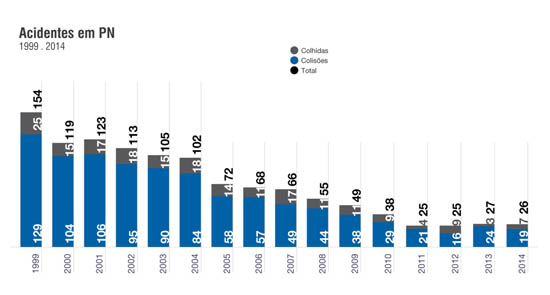 In 2014, there were fewer accidents and fewer deaths at level crossings (PN), announced today by REFER, the company responsible for the management of Portuguese railway lines.
In 2014, there were fewer accidents and fewer deaths at level crossings (PN), announced today by REFER, the company responsible for the management of Portuguese railway lines.
Thus, according to REFER data, last year there were four fatal accidents at level crossings, against 10 in 2012 and a maximum of 33 in 2002.
The company claims that this decrease is "the result of a continued action strategy, framed by Decree Law No. 568/99 of 23 December, and REFER's active policy focused on the objective of reducing accidents".
“The actions of suppression, automation, risk mitigation and awareness campaigns that REFER has been developing in an integrated manner have contributed to these results”, he adds.
In this context, in 2014 another 15 level crossings were suppressed and the safety conditions of another 30 were improved, namely through the automation of 23 PN, on the lines of Algarve (8), West (6), Minho (5) Alentejo (2 ) and Beira Alta (2), with an associated global investment of 5 million euros.
Thus, in global terms there are 1638 fewer PN today than in 1999.
In addition, of the 856 level crossings existing on December 31, 2014, 54% now have active protection, achieved through human protection or by the existence of automatic signaling - barriers, sound and light signaling - when in 1999, of the 2494 PN only 26% had this protection.
 And if the evolution is positive in terms of number and conditions of NPs, it is also positive in relation to accidents and fatalities, with a decrease of 83% in accidents and 85% in fatalities, when compared to 1999 records.
And if the evolution is positive in terms of number and conditions of NPs, it is also positive in relation to accidents and fatalities, with a decrease of 83% in accidents and 85% in fatalities, when compared to 1999 records.
The 26 accidents recorded in 2014 penalized 198 trains, which accumulated a total of 5794 minutes of delay, with obvious damage to passengers and the management of railway circulation.
REFER also points out that 62% of the accidents occurred in PNs with active protection, which denotes, on the one hand, a clear disregard for the signs in presence, and, on the other, that the effectiveness that comes from the introduction of measures to reinforce safety it depends above all on the behavior and co-responsibility of citizens using level crossings.
Taking this evidence into account, REFER states that it will continue – along with the actions in the field – to invest in the communication and awareness campaign “Pare Escute Look” and its involvement in institutional and training initiatives such as the “International Day for Safety at Level Crossings”, which will be held in 2015 on June 3rd.
For the next few years, REFER also maintains its commitment to «continue its action plan aimed at reducing accidents at railway crossings, with the goal for 2020 being a 40% reduction in accidents in PN, by reference to 2013, ie less than 17 accidents per year'.


















Comments